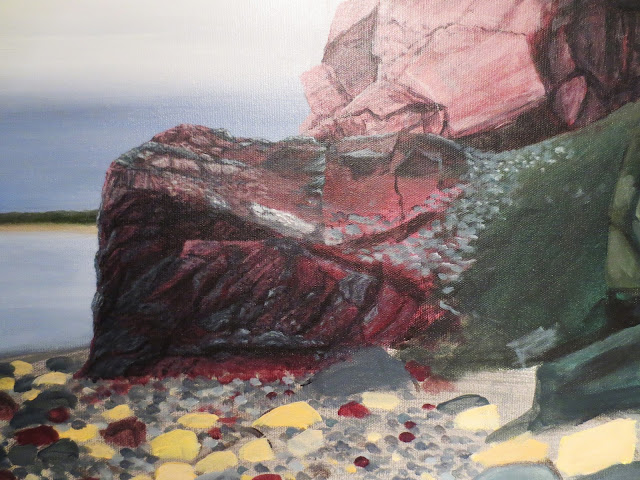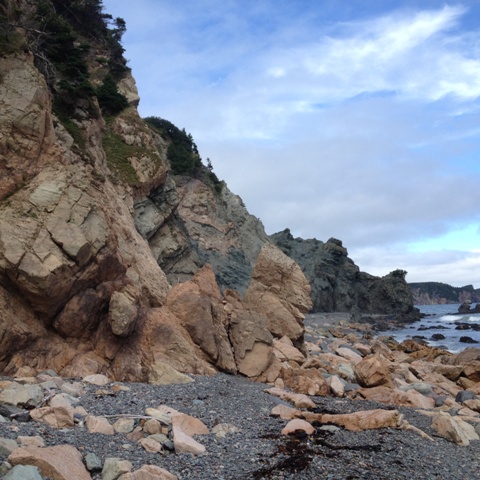On November 5th I attended a symposium by the Newfoundland and Labrador Archaeology Society in commemoration of the 100th anniversary of James P. Howley's book "The Beothuk or Red Indians". Below is a link to the keynote address by Gerry Penney from the Archaeology Society's webpage. Thank you Gerry for sharing!
James P. Howley, “the birth of Newfoundland archaeology, and the end of history” (PDF).
Howley extensively researched the Beothuk and mentions them often in his Reminiscences, His book recounts the history of the Beothuk encounters with the European explorers and settlers and their eventual extinction. It is the first comprehensive book about the Beothuk and has been for many decades. The book is also available on-line from the Queen Elizabeth II Library's Digital Archive Initiative website:
http://collections.mun.ca/cdm/compoundobject/collection/cns/id/26831/rec/577
Art
I thought I would show the painting process of Tickle Cove Broad. I started work on it October 22nd. I usually sketch out the image on large paper in reverse then transfer it onto the canvas with tracing paper but I didn't follow that procedure with this one. The basic outline is less complicated I think than the previous I've worked on...or maybe I just got lazy!
So, I started outlining the shapes, then filled them in with the basic colour, did background and sky, I usually get that out of the way first so I can concentrate on the geology. As I'm blocking in the colour my eye keeps scanning the photos for the detail. On first glance the cliffs look like they are three different colours but as I get closer and closer I see the variations in each rock type.
In his field book Howley stated that on the west side of Tickle Cove Broad there were cliffs of red, yellow and green rock all jumbled together. The more I progress, the more I see bits of green mixed in amongst the red, and yellow into the green.
I sometimes forget the detail that goes into the pieces and figure I can whip up one section with a few brush strokes...but the rock drags me in and I start working with my tiniest detail brush, layer after layer in small areas. It's like geological time, structures are formed and built up and taken away over millions of years. I feel I am building and building colour and texture slowly, like geological time and even though this step is the most onerous, it is the one I like best. There's an intimacy about it, I feel very connected to the structure as I unravel its mysteries.


































